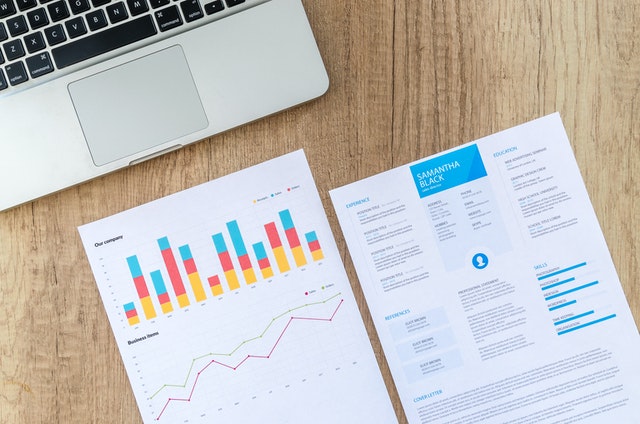In this fast-paced environment, businesses continue to move forward. Modern technological solutions offer more effective business solutions than before. One of the factors that have significantly contributed to more successful businesses is business analytics. The field of analytics has developed from displaying facts and figures into increased collaborative business intelligence, which predicts outcomes as well as assists in decision making.
Table of Contents
What is Business Analytics?
This can be defined as remodelling present or past data with the help of modern technologies. These are used to create sophisticated models which will drive future growth. General business analytics processes usually include data mining, data collection, data visualization, optimization, predictive analytics, forecasting, sequence identification, and text mining.
These days, every business produces a significant amount of data. With business analytics, the past data of these businesses can be analyzed. This is used to reveal new insights that will help businesses make strategic decisions along the line.
Business Intelligence – which is under the field of Business Analytics – plays an integral part in making use of various techniques and tools (e.g., artificial intelligence and machine learning) to predict and apply insights on daily operations.
Therefore, business analytics ties together different business management fields and computing to obtain valuable insights. These inputs and values are used to remodel the procedures of the business so as to increase its efficiency.
The Evolution of Business Analytics
Right from the start, technology has been utilized to improve the efficiency of businesses. The role of automation in performing and managing different tasks for big organizations has been a considerable one. Business performance has been further boosted by the giant strides the internet as a whole (and information technology in particular) has taken. With those advancements, we now have analytics tools able to use old and new data to put businesses on the right path to success.
Types of Business Analytics Techniques
These techniques can be categorized in the following ways:
- Descriptive analytics is a technique that describes past and present situations of a business’ activities.
- Diagnostic analytics is a technique that discovers reasons or factors for past or present performances.
- Predictive analytics is a technique that predicts results and figures with the help of various business analytics tools.
- Prescriptive analytics is a technique that recommends peculiar solutions to businesses in order to increase their growth.
A business analytics cycle begins with raw data gotten from services or devices, unstructured data collection, and then data processing and analysis so as to gain actionable insights. They will then be integrated into the business procedures in the hope that they deliver favourable outcomes.
The Benefits of Business Analytics
- Improve Customer Experience
With different business options available to them, customers have a lot of choices to select from. To make sure businesses are able to retain their customers, they consider analytics. For instance, businesses can analyze the interaction and purchasing habits of a customer on their website. This data will help them analyze patterns and then make improvements to the performance of their website. This might be as easy as sending push notifications to customers, prompting them of products they added to their carts. It is very likely that this will result in an improved customer experience.
- Make informed decisions
Companies usually outsource some of their processes in a bid to enhance efficiency. When choosing vendors for these activities, they will have to know the most productive ones. This is where analytics will play a part, as it can help to evaluate supplier performance using customer ratings, quality, order fulfilment speed, etc. All these will help businesses decide which of the vendors will be suitable for them.
- Decrease employee turnover
Each year, businesses have to face extensive costs caused by employee attrition and onboarding. To save cost and time, HR professionals will be able to utilize analytics tools to determine the extent to which an employee will align with the culture of the company. These tools can also be used to track performance and level of satisfaction regarding a new role. With these answers, businesses will have an idea of employees who will likely stay with them for an extended period.
- Increase efficiency
This isn’t limited to only employees. Other resources can also be analyzed to gain more knowledge about performance. For instance, a grocery store was able to decrease the costs of refrigeration by analyzing the in-store coolers’ temperatures. It was discovered that the store’s refrigerators were kept some degrees lower than was necessary – which actually increased power usage. Power costs were reduced when the temperature was increased. This is an example that businesses can benefit from.
- Reduce fraud
Companies have started to use analytics to identify fraud. One of the ways this is done is by making use of data from previous transactions to identify purchases that are potentially fraudulent. They also make use of predictive analytics to view profiles of customers and gauge risk levels. This will help to determine the level of risk customers present, prevent losses as well as improve customer relationships.
- Reduce manufacturing costs
Intel has done better than most companies when it comes to cutting down costs using analytics. The company used to run almost 20,000 tests on each manufactured chip, but since the emergence of predictive analytics, they have been able to determine the chips that need what kind of tests before they’re launched. By making use of data obtained from the tests, the company has been able to reduce costs by almost $3 million.
- Improved advertising
There’s no denying that advertisements are expensive. It’s the major reason why marketers have to know ways to get a return on investment. That is where analytics come in, as analytical methods like A/B split-testing can be used. When it involves online advertising, every landing page, pop-up, and product description is evaluated and improved to guarantee the best results. Product positioning on websites is even assessed to identify if there are better locations to increase sales and engagement.
- Improved product management
Companies that deal in retail, usually have a lot of products on sale. They need to determine which products to release and when. Data analytics can help in this regard as it will analyze the popular products with the season and region put into consideration. This data will then be utilized to target the most ideal product at the most ideal time. Ultimately, this will have a positive effect on sales.
- Tackle problems
When problems arise, businesses usually stop operations. This undoubtedly results in significant losses. To stop situations like this, business analysts can provide information that will help businesses identify potential risks, which will, in turn, help them to avoid significant losses. Business analysts can assess raw data to find malfunctions in existing systems and also help businesses to fix them.
- Conduct competitor analyses
These days, most businesses have a defined idea of their competitors. One effective way of getting ahead of the curve is by understanding these competitors: their strategies, USPs, their current products and services, etc. With all this data, you can have an idea of your business’ performance in comparison with your competitors.

Careers in Business Analytics
For people who like to work with numbers, business analytics is an ideal choice. To begin working towards a business analytics career, you will require a Bachelor’s Degree in Data Science, Business Analytics, Statistics, Marketing, Business Intelligence, Information Management, or any other related field. You can also decide to get a business analytics masters if you’re up for it.
These are some of the popular career paths relating to business analytics:
- Data Scientist or Data Analyst: The role of a data scientist is to collect, analyze and manage data in ways that will provide businesses with insights that are usable to various departments. Data analysts, present data using charts, tables, and other kinds of reports.
- Business Intelligence Analyst: This role is similar to that of a Data Scientist, but the major difference is that they gather and analyze information with the aim of gaining an advantage over competitors. They will tell management where the business currently stands, its strengths as well as weaknesses. They will also disclose how the business can improve profit.
- Big Data Analytics Specialist: With the help of data science and technology, big data analytics specialists find solutions to challenges in digital industries. They are often tasked to provide input on different decisions using the insights gotten via data. These conclusions will have to be backed up by factual information.
- Management Consultant or Analyst: This role involves working with business operations as well as ensuring they run smoothly. Management consultants also work with other departments to find out business processes that have to be improved.
- Marketing Manager: Marketing managers are tasked with establishing marketing strategies for the company. This may involve gathering retail analytics, overseeing marketing campaigns, or working with marketing and sales teams. It will depend on the kind of industry and organization.
- Operations Research Analyst: This role involves analyzing operational data. Operations research analysts make use of information technology to run analyses and come up with solutions that will improve efficiency across different departments.










Leave a Reply